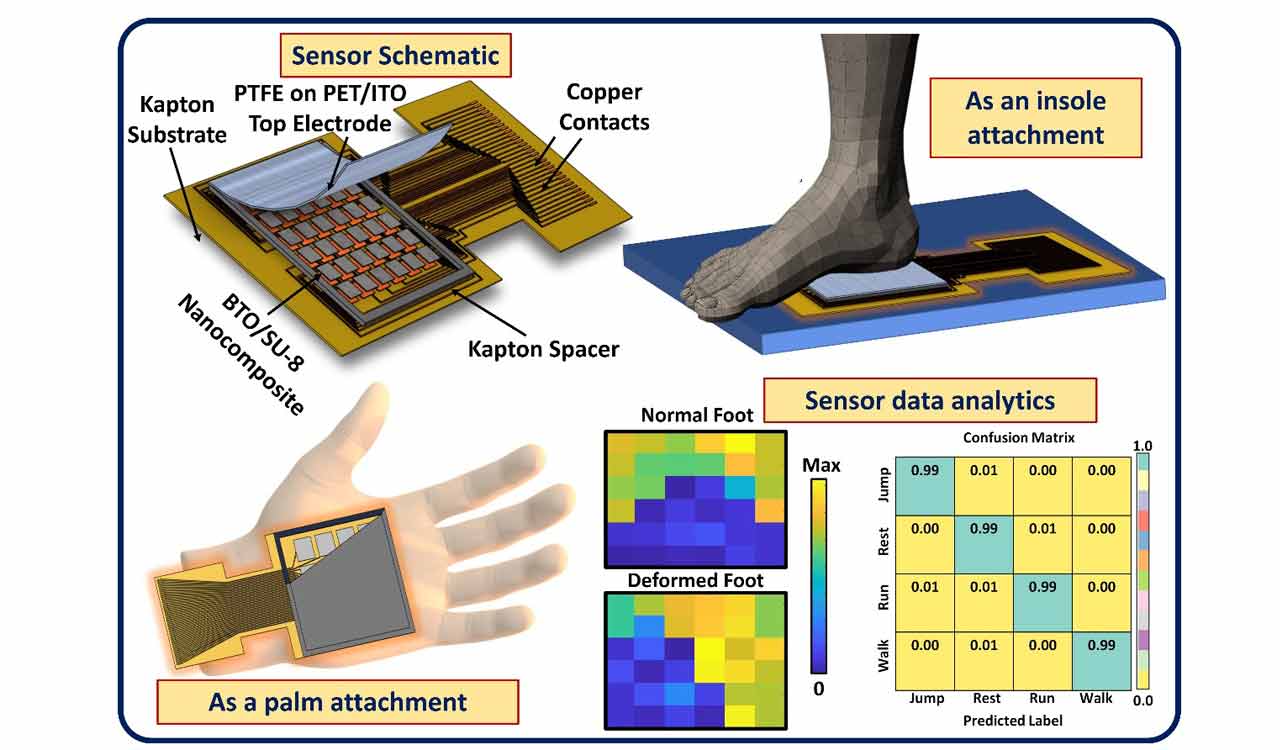The researchers, in a study featured in the journal Nano Energy, have introduced a fully flexible sensor that can be integrated into a sensor array. This design is robust and can easily accommodate varying insole sizes.
Published Date – 02:45 PM, Thu – 12 October 23

New Delhi: Researchers at Indian Institute of Technology (IIT) Delhi have developed a scalable and wearable pressure sensor that can potentially provide an easy, low-cost alternative to expensive footwear modifications, surgeries, and posture correction accessories.
The new sensor is based on a nanocomposite material, that has unique combination of light-sensitive polymer and piezoelectric nanoparticles, which offers the advantage of easy array design for pixelated sensing over large area, simple process flow, and low-cost implementation for human movement monitoring and injury rehabilitation.
In a study published in the journal Nano Energy, the researchers reported the sensor as fully flexible that can be implemented as a sensor array considering a robust design that comfortably fits inside the insole of varying sizes.
It can also be easily attached at the palm or any body part where localised pressure sensing can be useful. The use of dual transduction nanocomposite material in the proposed sensor allows concurrent sensing of mechanical strain as well as contact force/pressure that helps in easy integration with current Machine Learning algorithms by providing higher feature elements.
“The integration of sensors and Machine Learning leads to the invention of intelligent sensors for cutting-edge technologies in fields like healthcare, sports science, defence etc,” said Dr Dhiman Mallick, lead researcher and Assistant Professor at Electrical Engineering Department, IIT Delhi, in a statement.
“During the number of tests that we conducted in our laboratory, we found that the proposed sensor can potentially help detect foot problems in adults and children by analysing the pressure variation on the back end of the foot and converting it into electrical output. Since abnormal hind foot pressure distribution can lead to problems in knee joints, hips, and even spine-related injuries, understanding and correcting it is an important application,” Mallick added.
The sensor generated output is analysed by conventional Machine Learning models and linked to a person’s walking behaviour. By comparing the pressure patterns to those of predefined patterns of a normal person, clinical specialists can conclude the type of deformity present.
“The resulting pressure patterns can aid doctors and specialists in designing custom insoles that balance out the foot deformity by supporting regions of the foot showing abnormal pressure distribution. In effect, the proposed sensor can potentially provide an easy, low-cost alternative to expensive footwear modifications, surgeries, and posture correction accessories”, Mallick further said.
In addition, the sensor can help in understanding different human activities, like walking or running by feeling the pressure changes in the user’s hind foot.
This can have tremendous application in smart healthcare systems wherein the activity pattern, exercise intensity, number of steps, etc., form important parameters for critical health analysis in people with diabetes, obesity, etc.
The sensor can also be helpful for elderly fall detection, especially in patients with Parkinson’s disorder or who are disabled and aid in injury rehabilitation.





